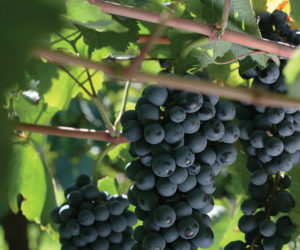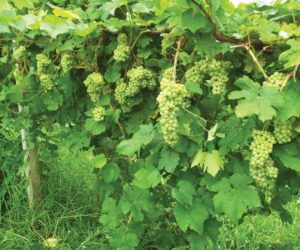Bill Hopkins followed a path taken by many American winemakers. A dairy farmer who saw his business fading in the 1970s — at the same time the wine industry was taking off — he sold off the herd and replanted his pastures to vineyards.
Twenty years later he is the proprietor of a small, award-winning family winery esteemed for its craftsmanship and its classic French varietals such as Chardonnay and Cabernet Franc.
But Hopkins Vineyard isn’t in California, the Pacific Northwest, or even the Finger Lakes region of New York. It’s in the hills of western Connecticut, one of just a handful of New England wineries. And while its better-known varietals are more popular, Hopkins has won the top award at the Eastern International wine competition three times for its Seyval Blanc.
Tips on Seyval Blanc
Bill Hopkins has been making Seyval Blanc wine for almost 20 years and offers some positive instructions for home winemakers who have access to this popular white variety and enjoy the fruitiness and flavors of the finished wine.
“Balancing your Seyval Blanc before fermentation is extremely important,” according to Hopkins. “Seyval usually is harvested with higher acids and lower sugar counts, at least in the colder climates where the variety is popular. You must try to get your acid numbers in the 0.75 percent to 0.9 percent range, and that can be done by adding water, but when you do, you must also add sugar to raise the sugar counts as water alone will dilute the must. You must bring the sugar or Brix count up to at least 20° and maybe up to 22°.
“You may reach those counts by measuring your sugar with a hydrometer (saccharometer) in a vial filled with the grape juice. If you have to raise the Brix count, you may do so by adding two ounces of sugar per gallon for each one degree you wish to raise it.”
If you are using a five-gallon carboy so popular with home winemakers and are making five gallons of wine, you can figure the amount of sugar required by multiplying two ounces of sugar per 1° required per gallon. For example if you wish to raise five gallons of must from 15° to 20° Brix, you have to raise the sugar count up to 5° for five gallons. Add two ounces of sugar per gallon times five (gallons) equals 10 ounces x 5(°) = 50 ounces of sugar will bring the Brix count up to 20°.
When must is balanced you can inoculate with a commercial yeast and ferment in a cool environment (garage or cool cellar). Cool fermentations (55° to 65° F) help to make the eventual wine more fruity and fresh tasting. It is very important that you rack the wine as soon as the fermentation is completed, as Seyval has a tendency to pick up off-odors if it is not racked immediately after fermentation.
Keeping the wine in a cooler environment (55° to 65° F) after fermentation will help clarify the eventual wine of tartrates, which are part of wine. Two or three rackings, with 25 to 40 parts per million of potassium metabisulfite powder added to the clean container each time will enable the wine to remain sound and clean.
A recommended yeast strain to inoculate Seyval Blanc with is the Red Star Cote des Blancs, formerly known as Epernay 2. Seyval can be bottled in the spring and enjoyed a few months after bottling.
Seyval Blanc Tips
- Don’t allow the Seyval to go through malolactic fermentation.
- Blend some (10 percent to 20 percent) of Seyval in your Chardonnay.
- Blend some (10 percent to 20 percent) of Chardonnay in your Seyval.
- Red Star Premier Cuvee yeast is an alternative yeast choice.




